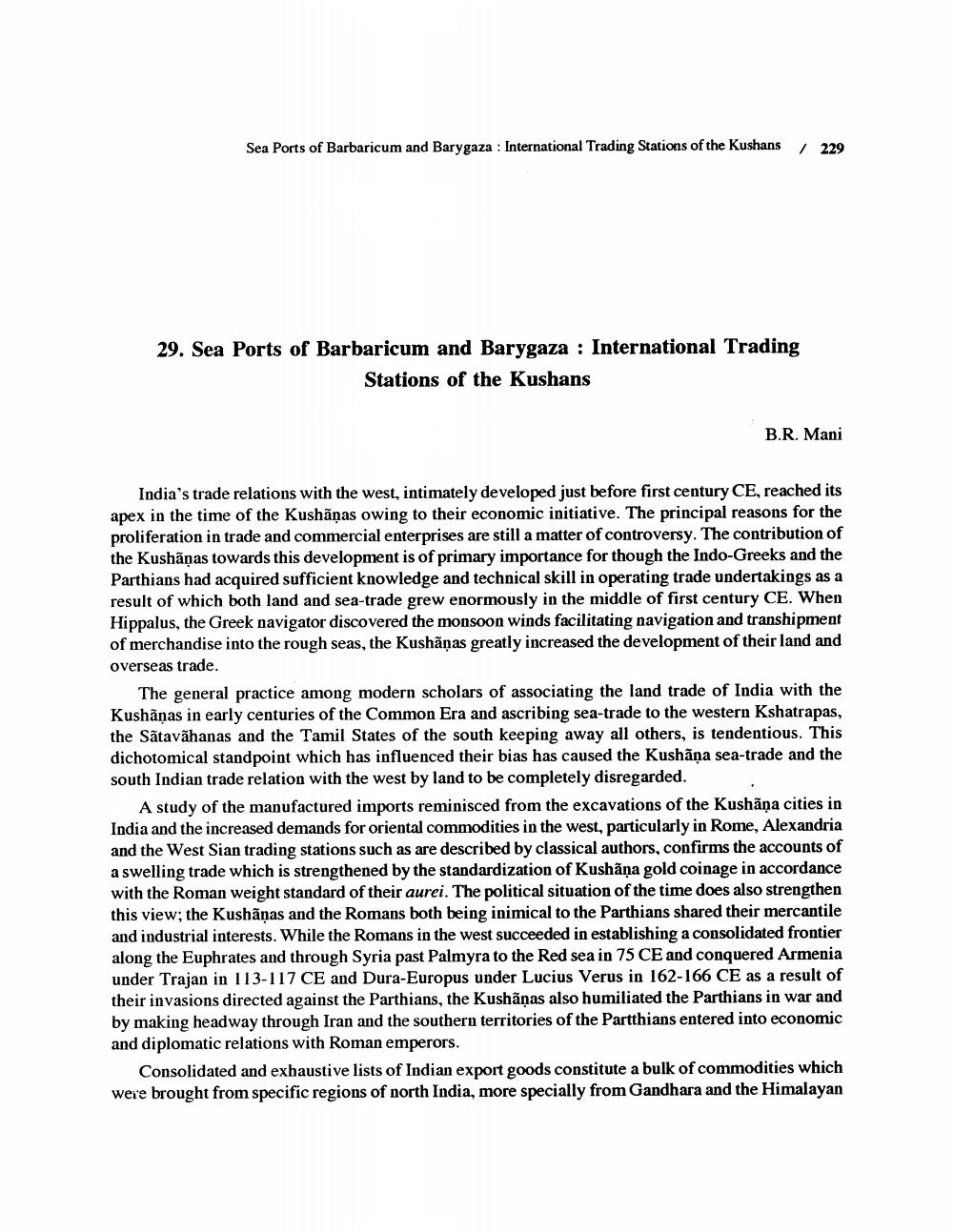________________
Sea Ports of Barbaricum and Barygaza : International Trading Stations of the Kushans
/ 229
29. Sea Ports of Barbaricum and Barygaza : International Trading
Stations of the Kushans
B.R. Mani
India's trade relations with the west, intimately developed just before first century CE, reached its apex in the time of the Kushãnas owing to their economic initiative. The principal reasons for the proliferation in trade and commercial enterprises are still a matter of controversy. The contribution of the Kushăņas towards this development is of primary importance for though the Indo-Greeks and the Parthians had acquired sufficient knowledge and technical skill in operating trade undertakings as a result of which both land and sea-trade grew enormously in the middle of first century CE. When Hippalus, the Greek navigator discovered the monsoon winds facilitating navigation and transhipment of merchandise into the rough seas, the Kushăņas greatly increased the development of their land and overseas trade.
The general practice among modern scholars of associating the land trade of India with the Kushăņas in early centuries of the Common Era and ascribing sea-trade to the western Kshatrapas, the Sãtavāhanas and the Tamil States of the south keeping away all others, is tendentious. This dichotomical standpoint which has influenced their bias has caused the Kushāņa sea-trade and the south Indian trade relation with the west by land to be completely disregarded.
A study of the manufactured imports reminisced from the excavations of the Kushāņa cities in India and the increased demands for oriental commodities in the west, particularly in Rome, Alexandria and the West Sian trading stations such as are described by classical authors, confirms the accounts of a swelling trade which is strengthened by the standardization of Kushăņa gold coinage in accordance with the Roman weight standard of their aurei. The political situation of the time does also strengthen this view; the Kushãņas and the Romans both being inimical to the Parthians shared their mercantile and industrial interests. While the Romans in the west succeeded in establishing a consolidated frontier along the Euphrates and through Syria past Palmyra to the Red sea in 75 CE and conquered Armenia under Trajan in 113-117 CE and Dura-Europus under Lucius Verus in 162-166 CE as a result of their invasions directed against the Parthians, the Kushãņas also humiliated the Parthians in war and by making headway through Iran and the southern territories of the Partthians entered into economic and diplomatic relations with Roman emperors.
Consolidated and exhaustive lists of Indian export goods constitute a bulk of commodities which were brought from specific regions of north India, more specially from Gandhara and the Himalayan




